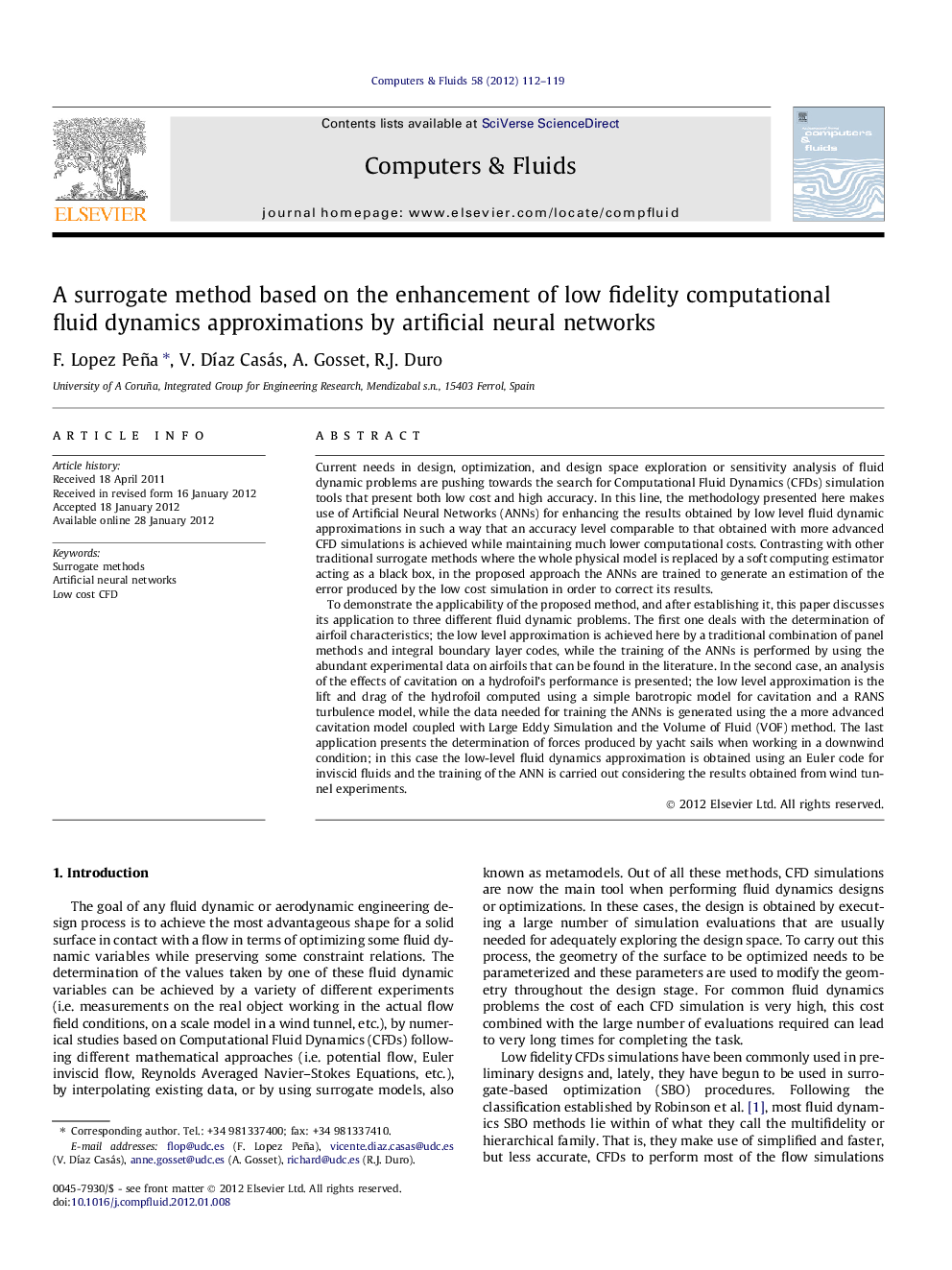| کد مقاله | کد نشریه | سال انتشار | مقاله انگلیسی | نسخه تمام متن |
|---|---|---|---|---|
| 762396 | 1462752 | 2012 | 8 صفحه PDF | دانلود رایگان |

Current needs in design, optimization, and design space exploration or sensitivity analysis of fluid dynamic problems are pushing towards the search for Computational Fluid Dynamics (CFDs) simulation tools that present both low cost and high accuracy. In this line, the methodology presented here makes use of Artificial Neural Networks (ANNs) for enhancing the results obtained by low level fluid dynamic approximations in such a way that an accuracy level comparable to that obtained with more advanced CFD simulations is achieved while maintaining much lower computational costs. Contrasting with other traditional surrogate methods where the whole physical model is replaced by a soft computing estimator acting as a black box, in the proposed approach the ANNs are trained to generate an estimation of the error produced by the low cost simulation in order to correct its results.To demonstrate the applicability of the proposed method, and after establishing it, this paper discusses its application to three different fluid dynamic problems. The first one deals with the determination of airfoil characteristics; the low level approximation is achieved here by a traditional combination of panel methods and integral boundary layer codes, while the training of the ANNs is performed by using the abundant experimental data on airfoils that can be found in the literature. In the second case, an analysis of the effects of cavitation on a hydrofoil’s performance is presented; the low level approximation is the lift and drag of the hydrofoil computed using a simple barotropic model for cavitation and a RANS turbulence model, while the data needed for training the ANNs is generated using the a more advanced cavitation model coupled with Large Eddy Simulation and the Volume of Fluid (VOF) method. The last application presents the determination of forces produced by yacht sails when working in a downwind condition; in this case the low-level fluid dynamics approximation is obtained using an Euler code for inviscid fluids and the training of the ANN is carried out considering the results obtained from wind tunnel experiments.
► A surrogate model for fluid dynamic studies is presented.
► The model enhances low cost CFD results by means of artificial neural networks.
► Training of these networks can be made by using experiments, published results or high fidelity CFD results.
► The main procedure is presented as well as three different practical cases.
Journal: Computers & Fluids - Volume 58, 15 April 2012, Pages 112–119